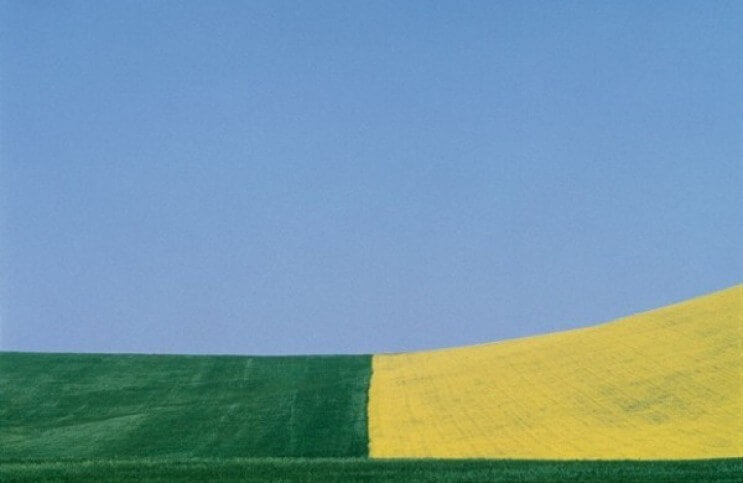
The Abstract Landscapes of Franco Fontana
“The purpose of art,” says Franco Fontana, “is to make visible the invisible.” This could seem like a strange thing for a photographer to say since the essential purpose of the camera is to capture the visible. But even though we are all looking at the same world, what each of us sees is unique. We each notice different elements of the physical universe: different shapes, different colors, different forms and different objects; and we each perceive in the things we see different meanings, different possibilities, and different purposes. Each of our private visual worlds is a secret: invisible, known only to us—unless, as Fontana suggests, we find a way to make it visible to others through art.
Natural Landscapes
Franco Fontana was born in Modena, in Northern Italy, in 1933. He taught himself photography and by age 32 was being offered solo exhibitions of his work. For more than five decades since he has been traveling the world (as he calls it his studio), making visible for us the visual marvels he sees hiding before our very eyes. The body of work for which he is most well known is his natural landscape photographs, which, though purely realistic, echo the work of the great abstract painters from history.
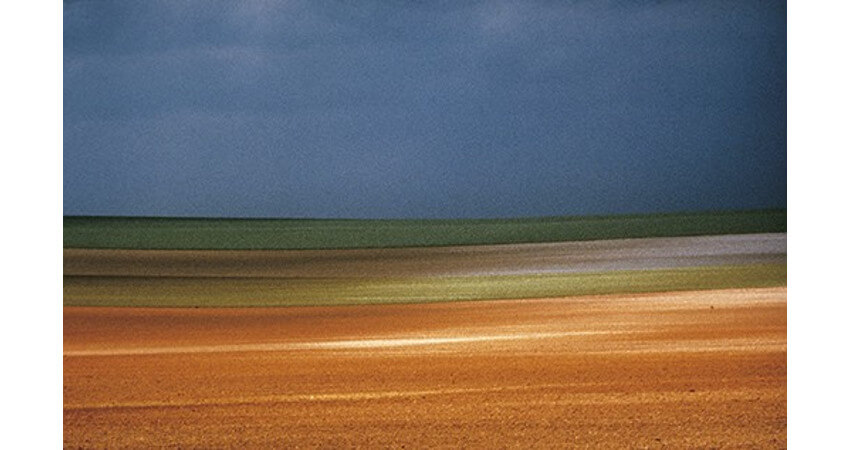 Natural landscape photograph by Franco Fontana
Natural landscape photograph by Franco Fontana
The transcendent color relationships of his landscape photos evoke the canvases of Mark Rothko and Barnett Newman. They achieve the depth of Hans Hofmann and the geometric sublimation of Agnes Martin. Their biomorphic whimsy, geometric balance and vivid hues bring to mind the best of Alexander Calder, Paul Klee and Joan Miró. Most shocking, they are not the result of trickery. If they seem unreal, impossible, or uncanny, it is only because we cannot believe that such visual marvels exist all around us all the time without us noticing.
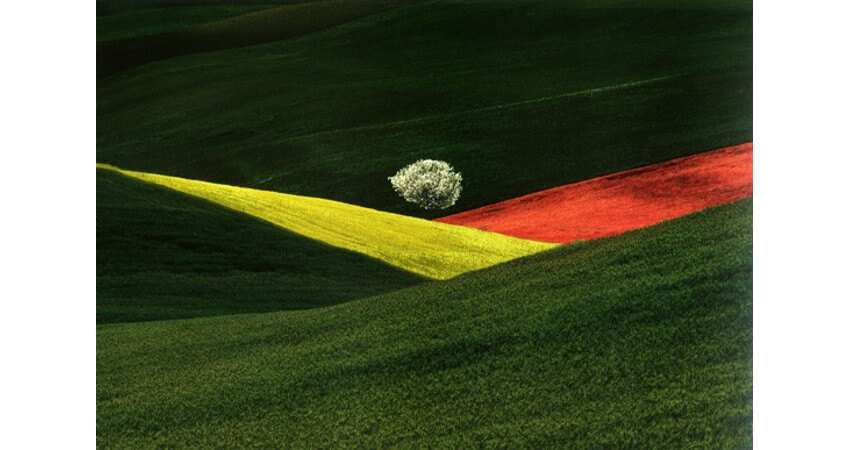 Natural landscape photo by Franco Fontana
Natural landscape photo by Franco Fontana
Urban Landscapes
Fontana has also long found as much inspiration in the city as in the countryside. He sees in our built worlds more than buildings, surfaces, objects and colors. He engages with the symphony of relationships that is constantly being rewritten between all of the physical elements of the urban landscape. Through his camera he captures the fleeting moments when shadow and light become solid as stone, and the sky becomes as tactile as the earth.
The shapes and forms Fontana reveals in his urban landscape photographs rival the compositions of the pioneers of modern abstraction. They speak to geometric universalities in the tradition of Kazimir Malevich. Their primary color relationships, and vocabulary of line and shape live up to the highest accomplishments of Piet Mondrian and Theo van Doesburg. They reveal in the everyday visual language of architecture a universal harmony. They elevate the ordinary reality of the built world, bringing it back in balance with nature.
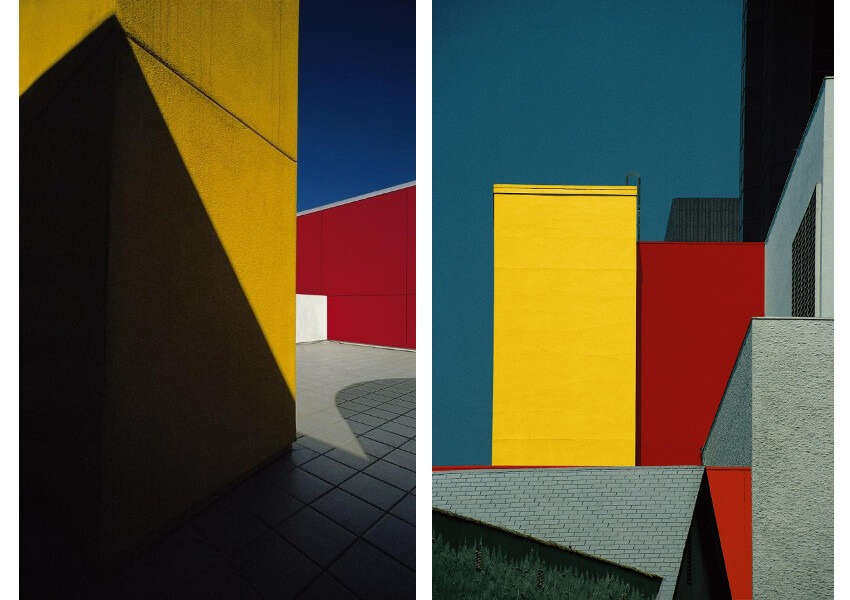 Franco Fontana - Urban Landscape Houston, 1985 (left) and Urban Landscape Los Angeles, 1991 (right)
Franco Fontana - Urban Landscape Houston, 1985 (left) and Urban Landscape Los Angeles, 1991 (right)
Shadows and Asphalt
In addition to studying the architecture of the city, Franco Fontana has also spent many years capturing other aspects of how society interacts with urbanity. In one series, which he calls “presenza assenza,” or presence absence, he focuses on shadows. These images continue his exploration of the geometry, symmetry, and color relationships that are ever present in the visual environment, while adding the human element, as experienced through the intermingling of our ephemeral essence with the stone backdrop of the city.
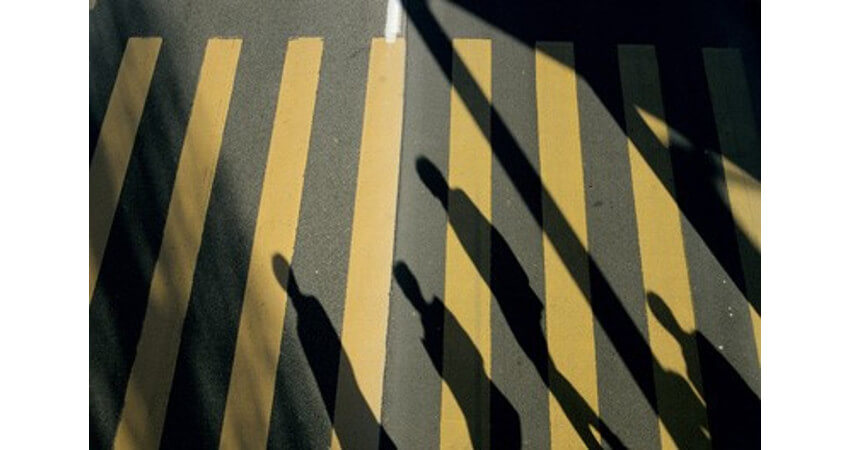 Franco Fontana - Zurich, 1981, from the presenza assenza series
Franco Fontana - Zurich, 1981, from the presenza assenza series
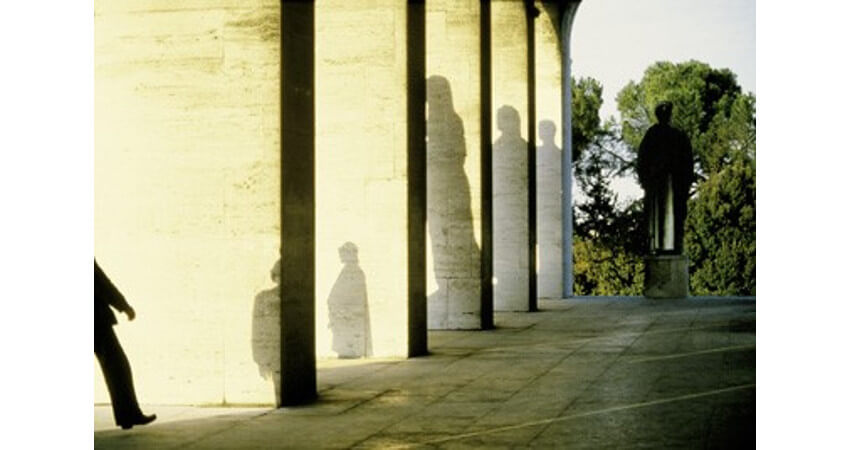 Franco Fontana - Rome, 1979, from the presenza assenza series
Franco Fontana - Rome, 1979, from the presenza assenza series
In another series called asfalt, or asphalt, Fontana accomplishes some of his most profound insinuations. The series is one part documentary, showing the constant cycle of decay and repair ongoing in our built world; it is one part anthropological analyses, framing in whimsical ways the often random and absurd way painted street lines, directional arrows, instructional symbols and decorative markings mingle with each other in the thoroughfares of the city; and most brilliantly it is one part formal aesthetic investigation, bringing together the elements of texture, surface, line, shape, form, pattern and color, in ways that perfectly manifest Suprematist abstract imagery.
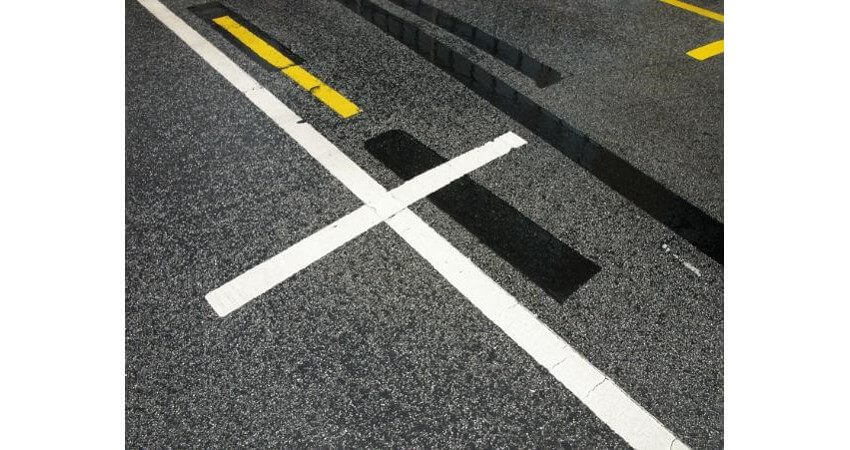 Franco Fontana - Asphalt, Frankfurt, 2004, from the asphalt series
Franco Fontana - Asphalt, Frankfurt, 2004, from the asphalt series
 Franco Fontana - Asphalt, Lecco, Italy, 1999, from the asphalt series
Franco Fontana - Asphalt, Lecco, Italy, 1999, from the asphalt series
Where the Universe Meets the Mind
It is a common misrepresentation of non-representational art that it cannot or should not correlate in any way with the real world. The photographs of Franco Fontana challenge old notions. They do not represent reality. They do not represent anything. They are reality. They show us our world, as seen through the otherwise secret perspective of one artist. They are abstract, but they correlate concretely, directly, and specifically to the reality we all share.
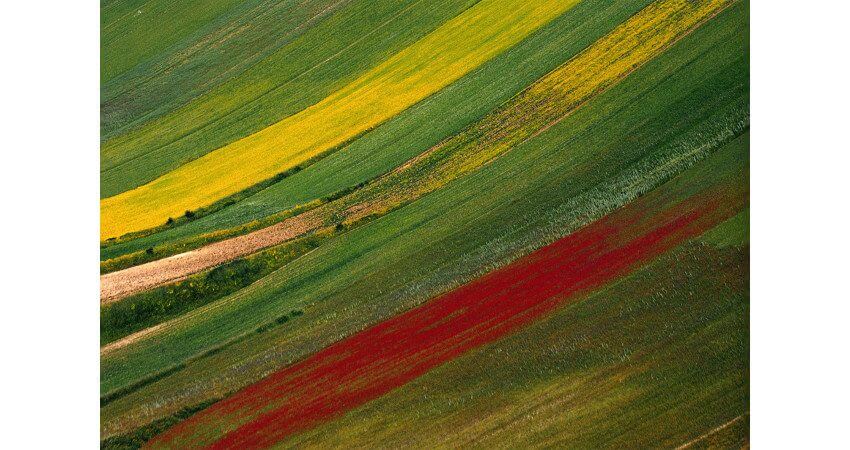 Color, texture, line, push and pull in a natural landscape by Franco Fontana
Color, texture, line, push and pull in a natural landscape by Franco Fontana
Fontana quotes often from Paul Klee, who said, “Color is the place where our brain and the universe meet.” Fontana adds, “Il colore è anche sensazione fisiologica,” or, “Color is also a physiological sensation.” The universe may not be a feeling, thinking organism. It may manifest color for purely objective reasons. But to us, color speaks to our whole selves: our emotions, our sense of meaning and history, our memories and our potential. The colors of the universe enter our mind in a raw, objective state, and there become transformed, and made personal. They are ordinary, until an artist like Franco Fontana translates them for us into something sublime.
Featured image: Franco Fontana - Paesaggio, Basilicata, 1975, color photographic print. © Franco Fontana
All images used for illustrative purposes only
By Phillip Barcio






